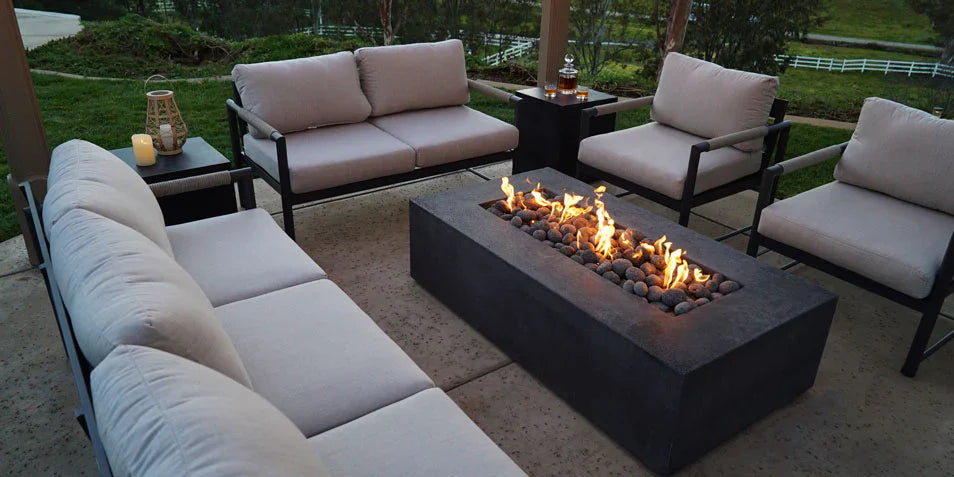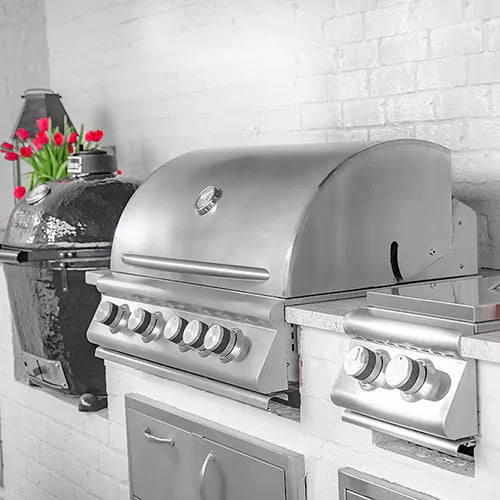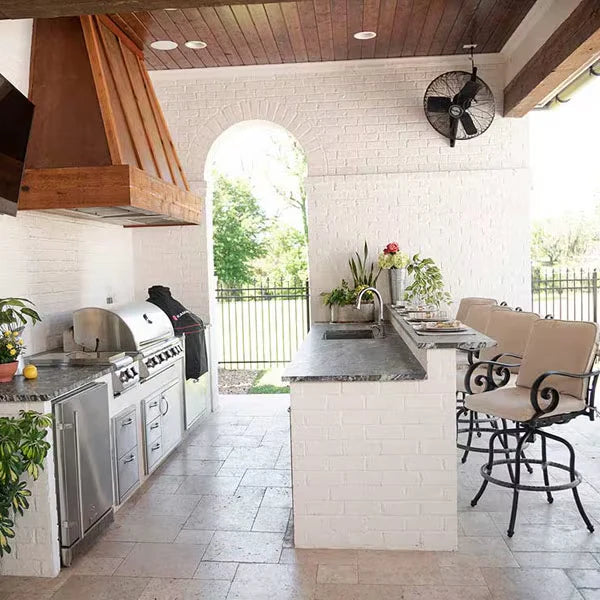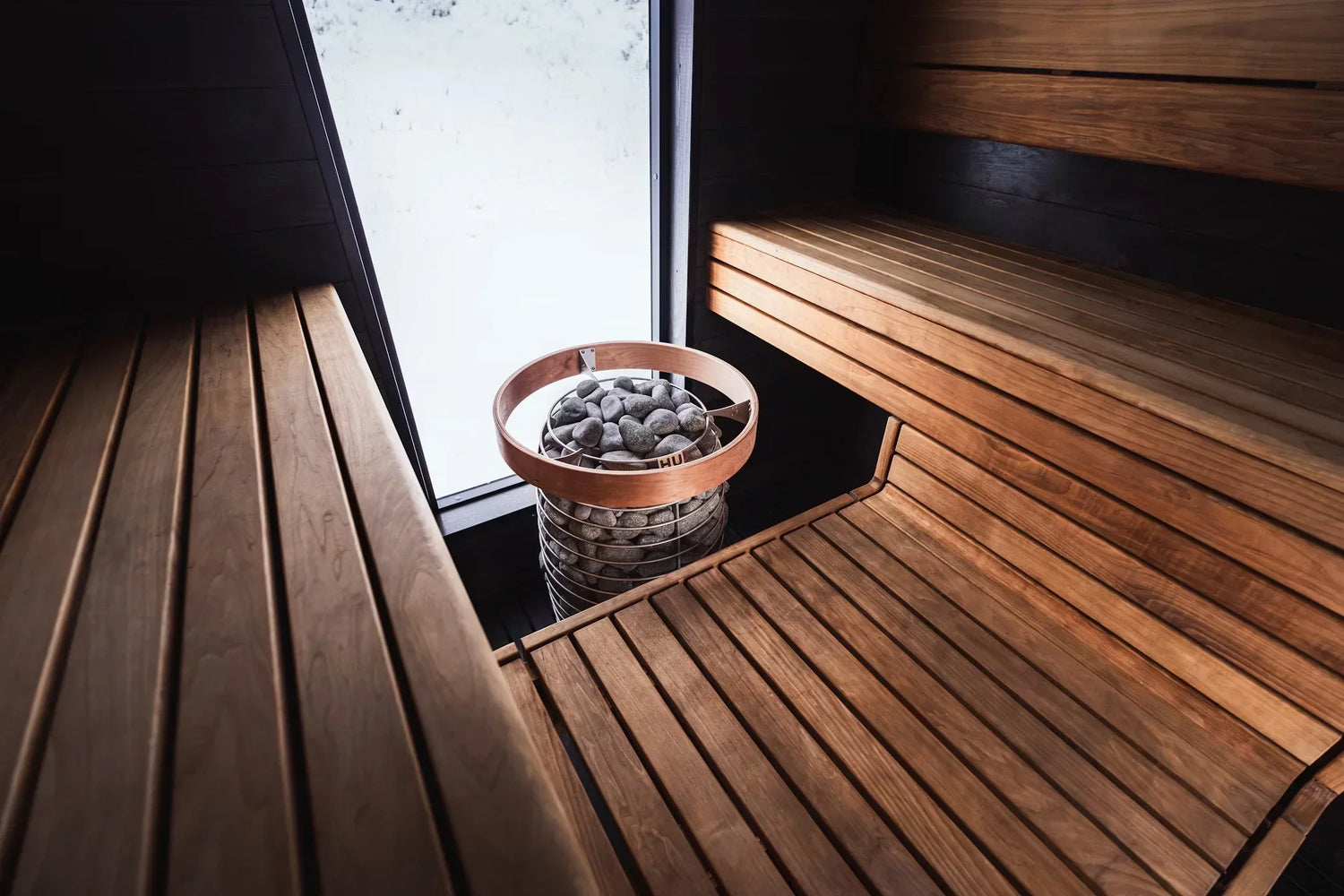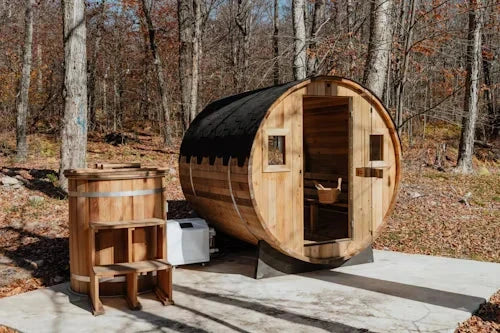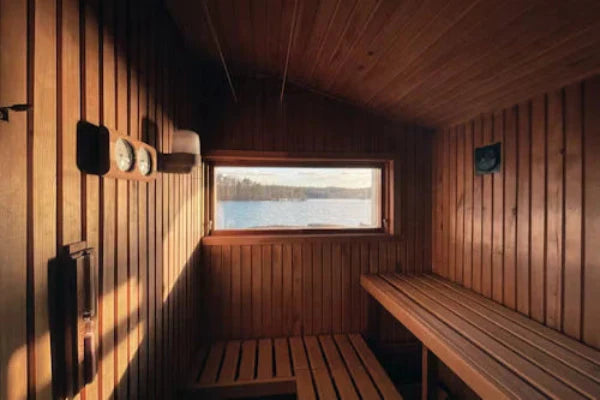Lighting a Fire Pit 101
Whether you're figuring out how to light a fire pit for the first time or upgrading your setup, the method matters more than you think. Different fire pits—wood-burning, propane, or natural gas—require different tools, steps, and safety checks.
Starting with the right technique not only keeps you safe but helps your fire last longer and burn more efficiently.
Let's break down the core lighting methods so you're not fumbling with matches when the guests show up.
How to Light a Wood Burning Fire Pit (Step-by-Step)
Wood-burning fire pits bring that unmistakable crackle, glow, and campfire vibe, but they also need a little know-how to get going properly.
From stacking techniques to common beginner errors, this guide will walk you through exactly what you need and what to avoid for a smooth, steady flame every time.
What You’ll Need (Tinder, Kindling, Logs, and a Lighter)
Starting a wood fire the right way begins with gathering the right materials. You'll need tinder (like dry leaves, pine needles, or shredded newspaper), small kindling sticks to catch early flames, and larger seasoned logs for sustained heat.
Natural fire starters like wax-coated cubes or fatwood sticks also work great if you want extra help.
Just make sure to skip the lighter fluid as it’s messy, dangerous, and totally unnecessary when your materials are properly set. A long-reach lighter or safety matches will do the trick without risking flare-ups.
The Teepee vs Log Cabin Stack Method
When learning how to light a fire pit, how you stack your wood matters.
The teepee method involves arranging kindling in a cone shape around your tinder, allowing flames to rise through the center and ignite the logs quickly.
The log cabin method stacks kindling in a crisscross pattern, forming a square structure with tinder in the center. This technique will burn slower, but more evenly.
Both methods work well; it really comes down to your preference for speed versus control. If you’re including visuals, this is where a simple diagram could make all the difference.
Common Wood Fire Mistakes to Avoid
Lighting a wood fire pit seems simple until the smoke won’t clear or the flame keeps dying. One of the biggest issues is using wet or green wood, which creates thick smoke and poor ignition.
Overcrowding your fire pit with logs blocks airflow and stops the fire from breathing.
Another mistake we often see is lighting from the top instead of the bottom, which prevents the flame from catching efficiently.
Always build with airflow in mind, using dry materials and a methodical start from the base.
Thinking of Switching? Why Gas and Propane Fire Pits Are Easier to Light
Wood fire pits have their charm, but gas and propane fueled fire pits light in seconds and require zero cleanup. With the push of a button or quick turn of a key, you get a steady, controlled flame.
Gas and propane fire pits are low maintenance, burn clean, and work reliably even in damp or windy weather. You also don’t need kindling, fire starters, or a stack of logs to get the party started.
Just bring a tank or connect to a gas line and you’re good to go. For homeowners who want ambiance without the hassle, it’s a clear upgrade.
How to Light a Gas or Propane Fire Pit (The Easy Way)
Lighting a gas or propane fire pit is quick, but knowing your ignition type makes all the difference. Whether you may be interested in a push-button, spark system, or match lit fire pit, we’ll walk you through how to do it safely and efficiently.
Match-Lit Ignition
This is the most straightforward ignition method with no buttons or wiring, just a manual gas valve and a long lighter or match. You’ll open the valve, let a small amount of gas flow, and quickly ignite it at the burner.
Because there’s no built-in spark or pilot light, timing matters: too much delay between gas and flame can cause a flare-up. It’s a reliable, budget-friendly option often found on high-end minimalist fire pits, but it does require you to be careful and deliberate every time you light it.
If you’re in a windy area, using a wind guard or shielding the flame with your hand can help ensure a smooth start.
Push-Button Spark Ignition
Push-button spark ignition is one of the easiest and most common ways to light a gas or propane fire pit.
All you do is press and hold the button while turning the gas valve. The starter creates a small spark that ignites the gas at the burner.
It eliminates the need for an external lighter, making it especially convenient for casual users or families. Most models also include safety features that stop the gas flow if ignition doesn’t occur right away.
It’s a user-friendly, low-maintenance option that works well in most backyard settings.
Electronic On/Off Ignition (CSA Certified)
Electronic on/off ignition systems offer the ultimate in convenience and safety, especially when CSA certified.
These built-in systems allow you to light your fire pit with a simple flip of a switch or the press of a remote.
CSA certification ensures that the system meets rigorous safety standards, giving you peace of mind every time you use it.
This setup is ideal for those who want a high-end, worry-free experience that fits seamlessly into modern outdoor spaces.
Hi/Lo Flame Adjustment Ignition (CSA Certified)
Hi/Lo flame adjustment systems give you control over the intensity of your fire with the press of a button and has its own app to complete the mood with ease.
Whether you want a soft, ambient glow for a relaxing night or full heat for chilly evenings, this option lets you choose based on the vibe.
It’s especially popular for commercial patios or frequent hosts who need versatility without compromising on style or convenience.
PowerGlow Hands-Free Ignition
PowerGlow hands-free ignition systems are the epitome of modern outdoor luxury. Controlled by a remote and/or timer, these setups let you ignite your fire pit without lifting a finger.
It is ideal for smart home integration or anyone who values seamless convenience. They're a top pick for sleek, contemporary spaces and also a smart solution for those with accessibility needs.
Fire Pit Ignition Safety & Maintenance Tips
No matter how advanced your ignition system is, keeping it safe and reliable comes down to basic care. Regularly inspect connections, clean out debris, and follow the manufacturer’s guidelines for upkeep.
A well-maintained ignition system not only lasts longer but also ensures every backyard fire starts exactly when and how you want it to.
Gas Line Checks and Ventilation
Before every use, take a moment to inspect your gas lines for cracks, leaks, or loose fittings. A simple soapy water test on the connections can reveal leaks. All you need to do is look for bubbles forming.
Proper ventilation is just as critical; gas fire pits need open airflow to prevent dangerous gas buildup and ensure clean, even combustion every time you light it.
Cleaning Burner Ports and Ignition Systems
Over time, debris like ash, insects, or dust can clog the burner ports or interfere with ignition systems, especially if your fire pit is left uncovered.
Use a soft brush or compressed air to clear the burner holes and gently wipe around the igniter with a dry cloth. For electronic systems, make sure battery compartments are dry and corrosion-free.
Regular cleaning not only ensures a consistent flame but also extends the life of your fire pit’s most important components.
What to Avoid Putting Near the Flame
Never place flammable objects, like cushions, fabrics, paper products, or dry leaves, within several feet of the flame. These materials can ignite quickly from stray sparks or high heat, especially on windy days.
Avoid placing propane tanks, lighter fluid, or aerosol cans nearby, as they pose serious explosion risks. Even decorative items like faux plants or low-hanging string lights should be positioned far enough from the fire pit to avoid heat damage or accidental combustion.
Always keep a safe clearance zone around the flame to protect your guests and your backyard.
The Key Takeaway: What’s the Best Way to Light a Fire Pit?
The best way to light a fire pit depends on the type you have and the kind of experience you want. Wood-burning fire pits offer that classic crackle and natural feel, but they take more prep and technique.
Gas and propane fire pits are fast, clean, and easier to control, especially with push-button or remote ignition systems.
Why Trust Active Oasis?
At Active Oasis, we don’t just stock fire pits, we live with them, test them, and know what makes each one tick. Every model we offer is backed by real-world experience, so you’re never guessing when it comes to performance or safety.
Need help picking the right ignition system or want a walkthrough before you buy? Reach out directly to Anthony at info@activeoasispro.com. He’s here to make sure your setup is simple, safe, and exactly what you need.
